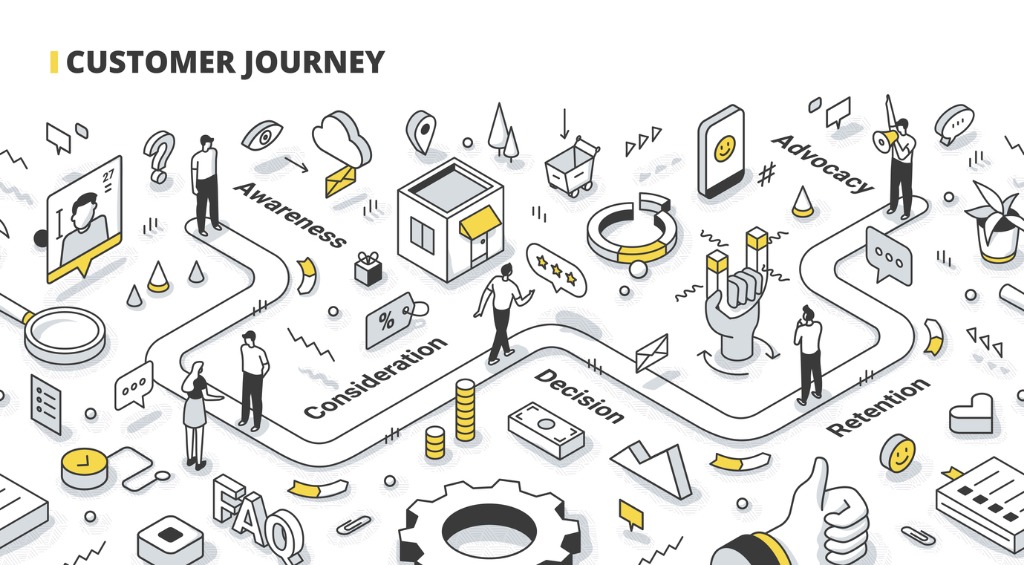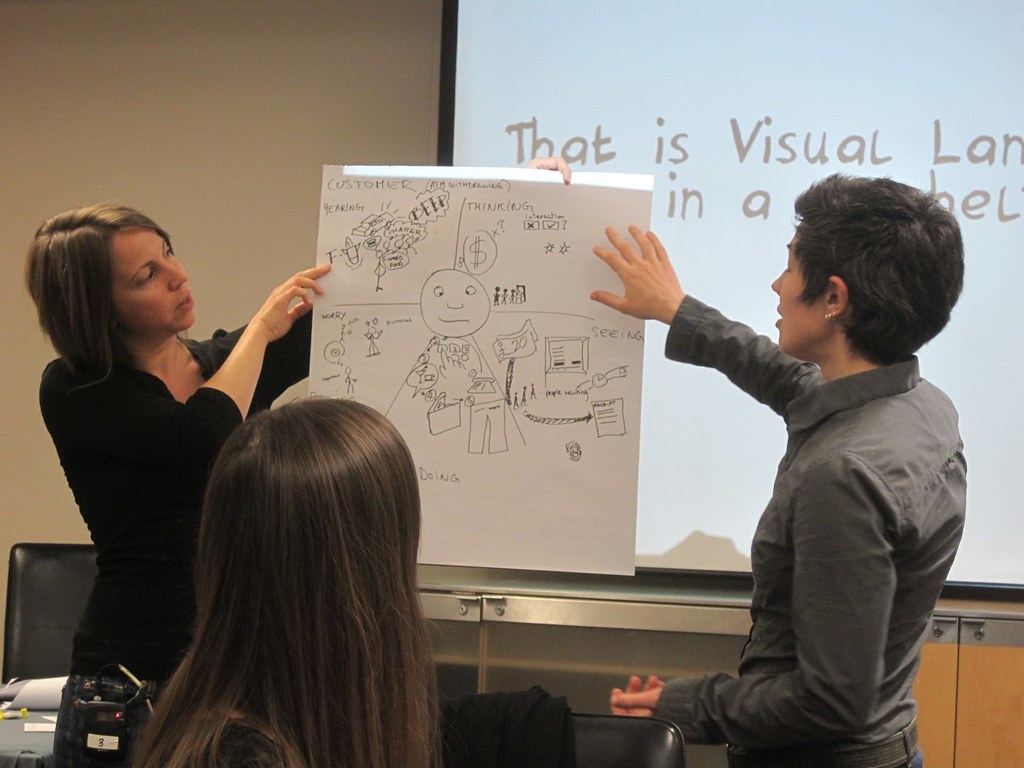Design Thinking for Innovative Business Solutions
In today’s fast-paced world, continuous innovation is crucial to staying ahead. Design Thinking has emerged as a powerful approach to business innovation, shifting away from a purely technological focus to something much more centered on human needs and creative problem-solving. In this blog post, we delve into what Design Thinking is, explore its core principles, and examine why it has become a pillar of modern product and service development. Think from the perspective of a DevOps engineer and programmer as we analyze the value Design Thinking provides to technological innovation and user-centered development, enriched with insights from various stages of its implementation.
What is Design Thinking?
Design Thinking is a multidisciplinary approach to problem-solving that integrates empathy, creativity, and rationality. Contrary to popular belief, the term “design” in Design Thinking goes beyond the physical attributes of a product—it emphasizes improving quality of life by identifying problems and generating impactful solutions. This approach requires not only technical skills but also a deep understanding of user needs, thus bridging the gap between technology, business feasibility, and customer desirability.
Tim Brown, CEO and president of IDEO, has played a pivotal role in popularizing Design Thinking. He defines it as “a discipline that uses the sensitivity and methods of designers to combine the needs of people with what is technologically feasible and what is viable from a business perspective, turning it into value for the customer and a market opportunity.” As we continue into an era dominated by knowledge, Design Thinking helps organizations innovate by creating new products or enhancing services.
Phases of Design Thinking
The Design Thinking process consists of multiple phases:
- User Experience: Grasp, Notice, Define.
- Creativity: Devise, Prototyping, Selection, Test.
- Design and Execution: Implementation.
These stages involve continuous iterations that help designers explore new avenues and make data-driven decisions.
Types of Intelligence in Design Thinking
To solve problems effectively, Design Thinking employs several types of intelligence:
- Comprehensive Intelligence: Involves addressing all user needs comprehensively, providing a well-rounded solution.
- Emotional Intelligence: Coined by Daniel Goleman, this type of intelligence takes into account empathy, self-awareness, and interpersonal relationships, all of which are key to creating solutions that resonate with users.
- Experimental Intelligence: Based on learning through experiences—just like how children explore the world—it focuses on observation, manipulation, and recording variables to develop a solid problem-solving approach.
Evolution of Design Thinking
The concept of Design Thinking represents a significant cultural shift for both designers and companies. Traditionally, innovation focused on technological advancements; however, the complexity and homogeneity of technological adoption necessitated the shift toward human-centered approaches.
Businesses that have yet to integrate innovative practices often find themselves stagnating, unable to adapt to market changes or consumer needs. The openness to experimentation, inherent in Design Thinking, encourages companies to take risks and embrace change—a necessary attitude for achieving long-term success.
In the business world, problems are often likened to a game of chess where starting conditions are clear, but the course of action remains dynamic and complex. Design Thinking, therefore, addresses these complexities by providing a flexible framework for iterative innovation.
Techniques Used in Design Thinking
Stakeholders Map
A Stakeholders Map identifies and categorizes key stakeholders who influence or are influenced by an organization’s activities. The objective is to understand the roles of these stakeholders, assess their influence, and establish strategies to communicate effectively with them. By developing a stakeholder map, teams can visualize the hierarchy and relevance of different users and align their projects to meet stakeholder needs.
| Technique | Purpose |
|---|---|
| Stakeholders Map | Identify and categorize stakeholders. |
| Cognitive Immersion | Understand users by simulating their actions. |
| Constructive Interaction | Gain insights by letting users express their experience in real-time. |
Cognitive Immersion
This technique aims to understand reality from the user’s perspective. The researcher plays the role of the user, integrating into their daily activities to gain insights into their experiences. This helps in creating solutions that align closely with actual user needs.
Constructive Interaction
Similar to “thinking aloud,” Constructive Interaction involves asking users to perform tasks while they verbalize their thoughts. This reveals usability issues, gaps in product design, and helps refine features to ensure the final product aligns with user expectations.
Core Principles of Design Thinking
The core principles of Design Thinking can be encapsulated as Originality, Flexibility, and Private Elaboration:
- Originality: Addresses problems from unconventional perspectives, leading to unique solutions.
- Flexibility: Encourages considering multiple possible solutions rather than sticking to a single approach.
- Private Elaboration: Involves adapting solutions based on user needs, allowing for constant improvement.
Empathy in Design Thinking
Empathy is central to Design Thinking. Techniques like Cognitive Immersion, Empathetic Visualization, and Interviews are employed to understand users better and create solutions that resonate with them:
- Empathetic Visualization: Designers immerse themselves into the user’s experience, going beyond observation to embody their perspective, which allows for deeper understanding and emotional connection.
- Interviews: Help gather qualitative data by allowing users to express their thoughts freely, yielding insights into their needs, motivations, and behaviors.
Creative Methods in Design Thinking
Mind Map
A Mind Map is a visualization tool that helps organize thoughts, concepts, and ideas through associations. It starts with a central theme and branches out to subtopics, encouraging brainstorming and representing connections clearly and concisely.
Steps to create a Mind Map:
- Create the Central Idea: Represents the main concept and is usually paired with an illustrative image.
- Add Branches: Represent subtopics or themes connected to the central idea.
- Include Keywords: Each branch is represented by a keyword.
- Assign Colors: Different colors are used for each branch, enhancing visual distinction.
- Incorporate Images: Images facilitate understanding and help overcome the barriers of language.
Mood Board
A Mood Board is a collection of images, materials, and colors representing the design direction of a product or service. It helps teams understand the overall aesthetic, convey feelings, and align on vision before delving into more detailed design work.
- Benefits:
- It separates abstract concepts from final forms, allowing a focus on essential ideas.
- Provides visual alignment among diverse stakeholders.
World Café
The World Café technique aims to encourage collaboration and conversation. Participants engage in small-group discussions around significant questions, then rotate groups, fostering new connections and exchanging ideas. This method leverages collective intelligence to generate innovative solutions.
SCAMPER
This technique involves applying hypotheses to brainstormed ideas to generate creative solutions. SCAMPER is a checklist-based method to encourage divergent thinking, allowing teams to see the possibilities inherent in modifying or repurposing existing ideas.
Design Thinking is more than a framework; it represents a shift in mindset, one that emphasizes user-centered development, continuous innovation, and collaborative problem-solving. By focusing on empathy, creativity, and prototyping, Design Thinking drives effective solutions that meet user needs while aligning with business goals. Implementing this methodology helps foster a culture of adaptation, experimentation, and innovation, equipping organizations to thrive in an increasingly complex world.
Embracing Design Thinking can transform how companies innovate, creating products and services that resonate deeply with their users. Start by understanding your users, empathizing with their journey, and prototyping iteratively. As a DevOps engineer or programmer, integrating Design Thinking into your workflow can not only enhance the technical outcome but ensure that your solutions are meaningful and impactful.
For further reading, check out Tim Brown on Design Thinking.


